Wal-Mart has unveiled a trial blueprint for the biggest stores in its US portfolio. Simon Mowbray reports from Bentonville, Arkansas
When Wal-Mart does things it tends to do them in a big way. And the world number one retailer’s latest effort is no exception to the rule. The supermarket giant, in a bid to turn around consumer perceptions that some of its 1,808 US-based Supercenters are beginning to look a bit tired and jaded, has come up with a new prototype for the format.
The first store to get the new look is a 203,091 sq ft new-build behemoth in Rogers, a stone’s throw from Wal-Mart’s administrative home in Bentonville, and was the prize exhibit being shown off to visitors to the annual shareholder meeting earlier this month.
First impressions do not disappoint, either, particularly when compared with some of the format’s older outlets. One of the store designer’s biggest decisions appears to have been to dump the tired-looking entrance area carpets and square-patterned lino usually found throughout Wal-Mart’s Supercenters in favour of stained concrete. This may be only a small touch, but few visitors are likely to disagree that it makes the place feel more upmarket, one of Wal-Mart CEO and president Lee Scott’s main goals as the chain grapples to persuade a greater number of affluent Americans to come through its doors.
Further inside, it is immediately apparent that the easy-on-the-eye changes do not end there. Out goes some of the piercing overhead lighting so prevalent in Wal-Mart’s larger stores. In come myriad skylights and a reduced amount of lighting that is turned up or down depending on the conditions outside. This alone, claims the retailer, is set to save it up to 85% in lighting costs.
Little change has been made to the usual Supercenter food offering which, by British standards and in keeping with the usual Supercenter offer, appears somewhat limited and caters for a seemingly culinarily challenged American market. Wal-Mart claims food and drink actually makes up 30% of its merchandise in Supercenters, although this often seems much less given the vast scale of the stores, and the prototype store in Rogers is no exception.
Even so, Wal-Mart has worked to improve the food shopping experience by extending the width of the store’s aisles to give shoppers extra space as they load up with the week’s groceries. Other changes include cleaner overhead signage in a new black-and-white colour scheme that has also been extended to the furniture at the store’s 14 full-service, 16 express and four self-checkout lanes.
But it is the other changes, including new services, which are likely to create the most excitement among shoppers. The deli department is testing a new system that allows customers to place their order and then pick it up when they leave, saving them from having to wait in line.
And 11 internet kiosks, aimed at customers who do not have web access at home, are dotted throughout the store, where shoppers can log on to Walmart.com to order merchandise and have it delivered to their homes. As well as offering price checks on products in-store, the terminals can also be used to create unique music CD compilations of songs chosen by the customer.
The Rogers Supercenter has also gone live with a new initiative by Wal-Mart to link its stores and customers’ computers by offering the chance to download digital photos on to Walmart.com, ready for hard copy collection in-store within the hour.
Elsewhere, the Rogers store contains an array of non-food merchandise, covering everything from tyres to water skis, that would still appear baffling to the average British shopper, despite the UK multiples’ inroads into non-food. Wal-Mart has also worked hard on the electrical goods section, reducing the height of displays to around eye level so shoppers can see beyond the aisle they are in.
However, perhaps most impressive is the addition of Wal-Mart’s largest lawn and garden centre to date, featuring a drive-thru.
With Wal-Mart set to add 350 stores to its US empire this year, initial indications are that the new prototype will be a welcome addition.
When Wal-Mart does things it tends to do them in a big way. And the world number one retailer’s latest effort is no exception to the rule. The supermarket giant, in a bid to turn around consumer perceptions that some of its 1,808 US-based Supercenters are beginning to look a bit tired and jaded, has come up with a new prototype for the format.
The first store to get the new look is a 203,091 sq ft new-build behemoth in Rogers, a stone’s throw from Wal-Mart’s administrative home in Bentonville, and was the prize exhibit being shown off to visitors to the annual shareholder meeting earlier this month.
First impressions do not disappoint, either, particularly when compared with some of the format’s older outlets. One of the store designer’s biggest decisions appears to have been to dump the tired-looking entrance area carpets and square-patterned lino usually found throughout Wal-Mart’s Supercenters in favour of stained concrete. This may be only a small touch, but few visitors are likely to disagree that it makes the place feel more upmarket, one of Wal-Mart CEO and president Lee Scott’s main goals as the chain grapples to persuade a greater number of affluent Americans to come through its doors.
Further inside, it is immediately apparent that the easy-on-the-eye changes do not end there. Out goes some of the piercing overhead lighting so prevalent in Wal-Mart’s larger stores. In come myriad skylights and a reduced amount of lighting that is turned up or down depending on the conditions outside. This alone, claims the retailer, is set to save it up to 85% in lighting costs.
Little change has been made to the usual Supercenter food offering which, by British standards and in keeping with the usual Supercenter offer, appears somewhat limited and caters for a seemingly culinarily challenged American market. Wal-Mart claims food and drink actually makes up 30% of its merchandise in Supercenters, although this often seems much less given the vast scale of the stores, and the prototype store in Rogers is no exception.
Even so, Wal-Mart has worked to improve the food shopping experience by extending the width of the store’s aisles to give shoppers extra space as they load up with the week’s groceries. Other changes include cleaner overhead signage in a new black-and-white colour scheme that has also been extended to the furniture at the store’s 14 full-service, 16 express and four self-checkout lanes.
But it is the other changes, including new services, which are likely to create the most excitement among shoppers. The deli department is testing a new system that allows customers to place their order and then pick it up when they leave, saving them from having to wait in line.
And 11 internet kiosks, aimed at customers who do not have web access at home, are dotted throughout the store, where shoppers can log on to Walmart.com to order merchandise and have it delivered to their homes. As well as offering price checks on products in-store, the terminals can also be used to create unique music CD compilations of songs chosen by the customer.
The Rogers Supercenter has also gone live with a new initiative by Wal-Mart to link its stores and customers’ computers by offering the chance to download digital photos on to Walmart.com, ready for hard copy collection in-store within the hour.
Elsewhere, the Rogers store contains an array of non-food merchandise, covering everything from tyres to water skis, that would still appear baffling to the average British shopper, despite the UK multiples’ inroads into non-food. Wal-Mart has also worked hard on the electrical goods section, reducing the height of displays to around eye level so shoppers can see beyond the aisle they are in.
However, perhaps most impressive is the addition of Wal-Mart’s largest lawn and garden centre to date, featuring a drive-thru.
With Wal-Mart set to add 350 stores to its US empire this year, initial indications are that the new prototype will be a welcome addition.

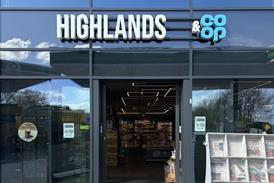

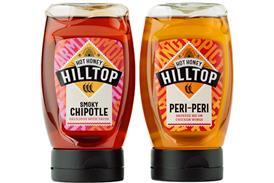
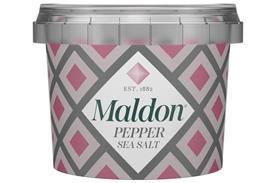







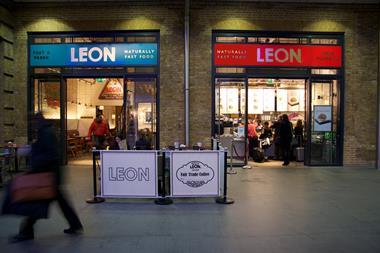



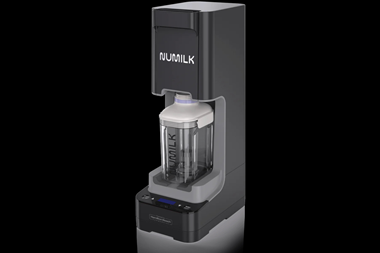
No comments yet